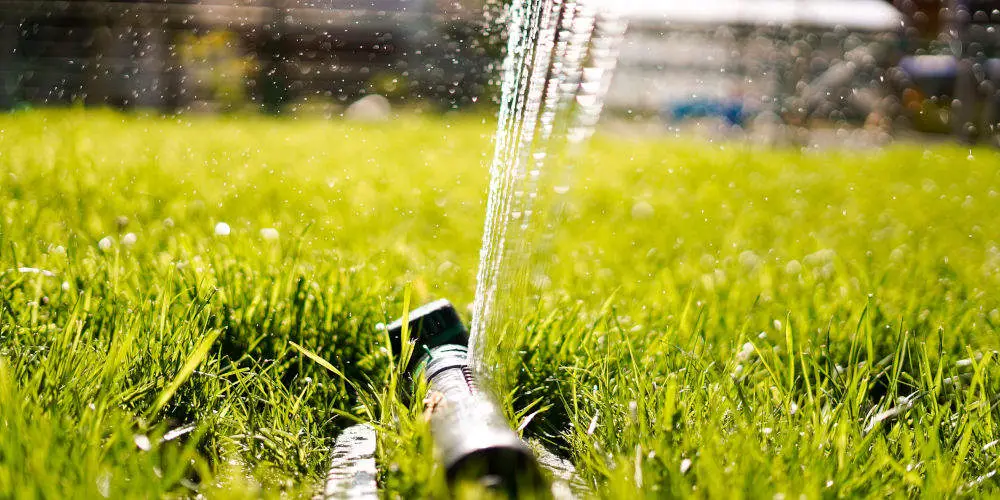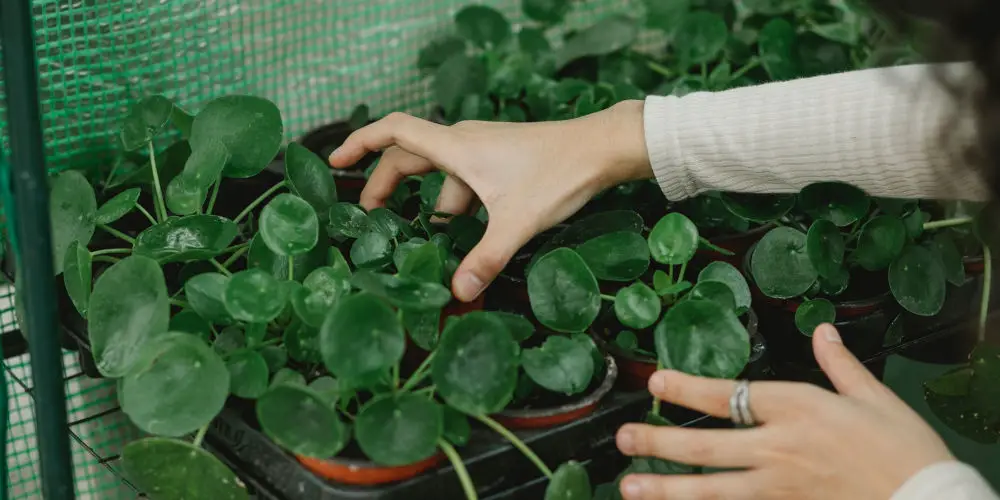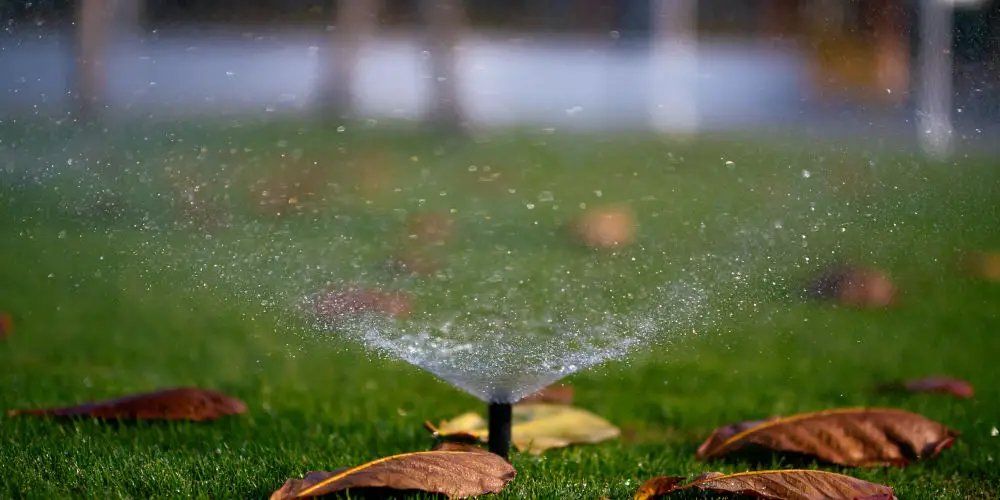How to build a smart garden watering system

Building an effective smart garden watering system begins with understanding what a smart garden is. A smart garden is a computer-controlled garden.
Although computers and electronic equipment have long been used to improve farming and gardening, the smart garden frequently refers to small, indoor units that employ various methods to determine when to alert the user to apply nutrients, as well as other resources.
Smart watering, also referred to as smart irrigation, plays an essential and significant role in this process. There are many ways to create and control a watering system for your smart garden.
We’ll show you how you can build your very own smart garden right from the comfort of your own home! After all, building your own irrigation system can help you save a substantial sum of money when creating your smart home garden.
According to Waterwise, hoses and sprinklers typically use about 1000 litres of water an hour, which is more than 12 baths. And as a lot of this water is wasted, it has an impact not only on the environment but also on your wallet
There’s no reason you should have to pick between a beautiful garden or lawn and conserving water in this day and age. Installing a new smart irrigation system might assist you in reducing your water consumption. It’s also a fantastic lawn maintenance tool that may boost your garden’s health and look.
What is a smart garden watering system?
Smart irrigation systems combine sophisticated technology sprinklers with nozzles that improve coverage with irrigation controllers that monitor moisture-related circumstances on your property and automatically adjust watering to ideal levels.
Weather-based irrigation and soil moisture-based irrigation are the two main types of smart irrigation technology. Both can assist you in conserving water, but there are some key differences. So, it’s important to take time to consider both options before choosing the right one for your garden.

Weather-based smart watering system
A weather-based irrigation system, also known as ET-based technology, consists of a mini on-site weather station or weather sensor capable of monitoring conditions such as temperature, rainfall, and solar radiation on your property, or this information is broadcast to the irrigation controller from a remote weather site.
The sensors are often modest and can be hidden on a structure, a fence post, or any object in your garden. The sensor and the controller are usually connected via wireless communication.
It can have more precise information on the plant kind, soil type, slope, exposure, and sprinkler type entered into it.
In addition to the water savings, the improved plant health, which has the potential to reduce the amount of money spent on plant health issues, maybe significant enough to justify the cost of some of the more sophisticated systems.
Moisture-based smart irrigation
A moisture-based irrigation system is the other sort of smart irrigation system. Sensors are used in this technology to determine the actual moisture content of the soil. Based on this information, it modifies the irrigation watering time.
Moisture-based systems, like weather-based systems, are sold as both integrated controllers and add-on technologies.
Keep in mind that there are two sorts of moisture-based systems on the market. The first method, known as suspended-cycle irrigation, employs a timed and automated watering schedule. The only difference is that if the soil moisture threshold is too high, it prevents irrigation.
A water-on-demand smart garden watering system is the second type of moisture-based smart irrigation system. These keep track of two soil moisture thresholds, either high and low. The system sends out water requests as needed to keep the soil moist between the two.

Other components you need
Sensors and controllers are just one piece of the puzzle. Other variables, such as water-efficient emitters like rotors and spray heads, must be in place to properly maximize their benefits.
Wherever you place these elements, a key factor to consider for overall efficiency and plant health, as it is with any irrigation system.
By supplying ideal soil moisture levels, a properly planned and implemented smart irrigation system can save significant water and money while also enhancing plant health.
It’s crucial to keep in mind, though, that even the most powerful smart irrigation system can’t ensure you’ll save money. Its success is contingent on thorough setup and monitoring.
For the proper installation of a smart irrigation system, many variables must be considered. Here are a few examples:
- Separate areas for gardens, landscape beds, and grass
- Pressure of the sprinkler
- Sprinkler location
- Choosing a sprinkler nozzle
- The components’ current state
- Type of soil, condition, and slope
- Plant requirements
Building your smart garden watering system step-by-step
While no two home smart garden watering systems are exactly the same, there are a few steps that you should consider and become familiar with during your venture into creating your own smart garden water system. Here are the steps that you should keep in mind.
#1 Gather components
Whether you are planning on using a weather-based or moisture-based watering system, one this you will absolutely need to ensure you do prior to building your system is collecting and account for all of the components.
Each system will require its own set of components, so it is important to understand what you need and ensure that you have those pieces before starting.
#2 Understand how these components interact
Essentially, you will be creating a circuit, so it is important to know how each of your components interacts with each other in a closed system. For example, the resistance of the soil affects the values of the Soil Moisture Sensor.
For systems that read the status of the soil to activate functions, the corresponding app or controller will rely on the soil moisture sensor to prompt a response.
#3 Building your system
This is where your circuit building begins. How you connect your components is somewhat dependent on the system that you choose. But, you will most likely use a circuit board or makeshift alternative like a breadboard to build the circuit.
It is always best to sketch or map your circuit before you start building.
#4 Upload your code
Your smart watering system needs rules and procedures to follow. This is why you will likely have to input or upload code to the program that you are using for your smart garden system.
There are many different options when it comes to choosing software or app, and the great news is that many of them are free or low-cost!
#5 Test and implement
To make sure your smart garden watering system works properly, you will have to set it up and start using it to determine its effectiveness.
This will help you determine if your sensor is accurately reading the soil or weather, as well as ensure that all of the components are functioning properly. If all is well, then you’re finished!

Building a watering system using smart home technology
You shouldn’t have to choose between a beautiful garden or lawn and conserving water, especially when we can solve these issues using technology. Thankfully, you can reduce your water consumption by installing a new smart irrigation system.
A smart garden watering system is also a fantastic lawn maintenance tool that may boost your garden’s health and look. And now you know how to build a watering system using technology.




